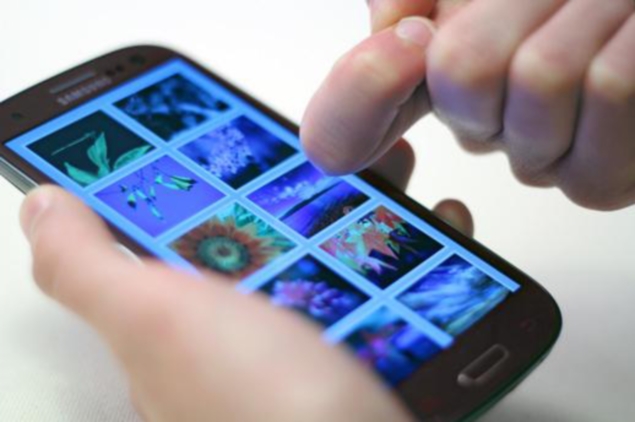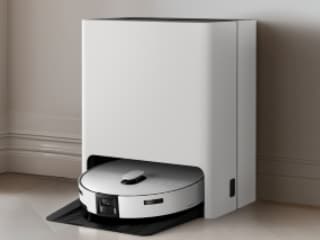- Home
- Mobiles
- Mobiles News
- Technology that lets you 'feel' textures on touchscreen
Technology that lets you 'feel' textures on touchscreen

In a game-changing invention, engineers at Disney Research, Pittsburgh, have developed a new technique that allows you to feel the texture of objects seen on a flat touchscreen.
The novel algorithm enables a person sliding a finger across a topographic map displayed on a touchscreen to feel the bumps and curves of hills and valleys, despite the screen's smooth surface.
The technique is based on the fact that when a person slides a finger over a real physical bump, he perceives the bump largely because lateral friction forces stretch and compress skin on the sliding finger.
By altering the friction encountered as a person's fingertip glides across a surface, the Disney algorithm can create a perception of a 3D bump on a touch surface.
The method can be used to simulate the feel of a wide variety of objects and textures.
"Our brain perceives the 3D bump on a surface mostly from information that it receives via skin stretching," said Ivan Poupyrev, who directs Disney Research, Pittsburgh's Interaction Group.
"Therefore, if we can artificially stretch skin on a finger as it slides on the touchscreen, the brain will be fooled into thinking an actual physical bump is on a touchscreen even though the touch surface is completely smooth," Poupyrev said in a statement.
In experiments, researchers used electrovibration to modulate the friction between the sliding finger and the touch surface with electrostatic forces.
Researchers created and validated a psychophysical model that closely simulates friction forces perceived by the human finger when it slides over a real bump.
The model was then incorporated into an algorithm that dynamically modulates the frictional forces on a sliding finger so that they match the tactile properties of the visual content displayed on the touchscreen along the finger's path.
A broad variety of visual artifacts thus can be dynamically enhanced with tactile feedback that adjusts as the visual display.
"The traditional approach to tactile feedback is to have a library of canned effects that are played back whenever a particular interaction occurs," said Ali Israr, a Disney Research, Pittsburgh research engineer who was the lead on the project.
"This makes it difficult to create a tactile feedback for dynamic visual content, where the sizes and orientation of features constantly change. With our algorithm we do not have one or two effects, but a set of controls that make it possible to tune tactile effects to a specific visual artifact on the fly," Israr said.
The new research will be presented at the ACM Symposium on User Interface Software and Technology in St Andrews, Scotland.
Get your daily dose of tech news, reviews, and insights, in under 80 characters on Gadgets 360 Turbo. Connect with fellow tech lovers on our Forum. Follow us on X, Facebook, WhatsApp, Threads and Google News for instant updates. Catch all the action on our YouTube channel.
Related Stories
- Samsung Galaxy Unpacked 2025
- ChatGPT
- Redmi Note 14 Pro+
- iPhone 16
- Apple Vision Pro
- Oneplus 12
- OnePlus Nord CE 3 Lite 5G
- iPhone 13
- Xiaomi 14 Pro
- Oppo Find N3
- Tecno Spark Go (2023)
- Realme V30
- Best Phones Under 25000
- Samsung Galaxy S24 Series
- Cryptocurrency
- iQoo 12
- Samsung Galaxy S24 Ultra
- Giottus
- Samsung Galaxy Z Flip 5
- Apple 'Scary Fast'
- Housefull 5
- GoPro Hero 12 Black Review
- Invincible Season 2
- JioGlass
- HD Ready TV
- Laptop Under 50000
- Smartwatch Under 10000
- Latest Mobile Phones
- Compare Phones
- OnePlus 15R
- Realme Narzo 90x 5G
- Realme Narzo 90 5G
- Vivo S50 Pro Mini
- Vivo S50
- OPPO Reno 15c
- Redmi Note 15 5G
- Redmi Note 15 Pro 5G
- Asus ProArt P16
- MacBook Pro 14-inch (M5, 2025)
- Infinix Xpad Edge
- OnePlus Pad Go 2
- Just Corseca Skywatch Pro
- Honor Watch X5
- Acerpure Nitro Z Series 100-inch QLED TV
- Samsung 43 Inch LED Ultra HD (4K) Smart TV (UA43UE81AFULXL)
- Asus ROG Ally
- Nintendo Switch Lite
- Haier 1.6 Ton 5 Star Inverter Split AC (HSU19G-MZAID5BN-INV)
- Haier 1.6 Ton 5 Star Inverter Split AC (HSU19G-MZAIM5BN-INV)

















